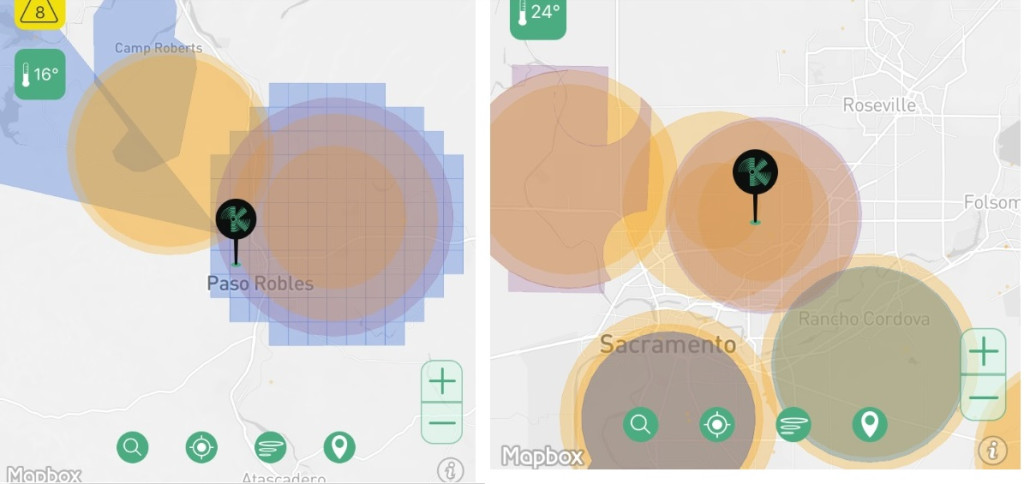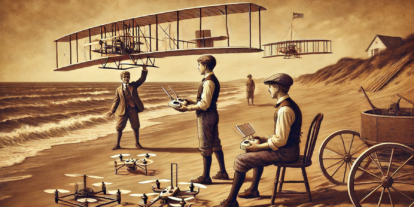On Thursday the FAA released an entirely new kind of map that will open up controlled airspace for drone pilots. To date, controlled airspace was a broad five-mile radius around an airport that restricted drone flight. The new three dimensional grids are less draconian. Instead of indiscriminate five-mile circles around an airport, actual flight paths and neighborhood boundaries are taken into account. Operators will still need authorization to use the airspace, but the new maps remove some ambiguity and will result in more commercial drone flights — from inspections to drone deliveries — in thousands of neighborhoods around the country.
Drones operate in an airspace that, for the first 75-some years of its existence, the FAA didn’t have to expend a lot of time or resources on. This week’s news represents a huge step forward.
And earlier this month, at the FAA UAS Symposium in Virginia, the agency sent another strong signal that changes are coming for drones: It announced that third-party developers will soon be able to communicate with FAA systems. The interface will move from phone calls and filling out forms to integrations with the tools and applications operators already use in their drone operations.
Let’s take a closer look at these two developments.
The new maps
Commercial operators are the ones most affected by the new airspace maps. These operators are the most risk-averse and dependent on operating in urban areas. As a rule of thumb, many chief pilots that I’ve spoken to in the past have said they simply will not operate in controlled airspace due to the risk of a violation. This blocks vast numbers of potential commercial drone flights from ever taking off.
Knowing the airspace you’re going to operate in is a key first step of any flight, but it’s probably the one that is most confounding to drone pilots without a traditional aviation background. If you’re 4.9999 miles away from an airport, it makes sense that you should be allowed to fly 50 feet above a house to take some pictures, and that day is coming imminently.
In moving from the simple circle with a five-mile radius to the new smart grid, the FAA “crowdsourced” airports. It asked what an acceptable flying height would be, assuming that all runways were fully operational. 100-foot vertical separation may be impractical for traditional manned flights, but these are game changing chunks of airspace for nimble UAVs.
Granular airspace and maps will make it easier and faster for responsible operators to obtain authorization and fly in controlled areas. By providing a flight path, the grid system will allow for structured, automated approvals based on the rules of the grid — rather than relying on a tower operator who probably doesn’t want to deal with drone pilots in the first place.
The first maps released are grids that display 100-foot increments of operational airspace for more than 200 airports around the country. Naturally, takeoff and approach paths will remain highly restricted, but much of the traditionally controlled airspace is now clear to 100-200 feet within a mile or two of busy airports — more than adequate to enable meaningful commercial drone operations.

Granular airspace maps are the first step of (hopefully) many toward a more business-friendly regulatory environment. Large industries like shipping, real estate, and security are reluctant to bear the risk of investing in cutting-edge technology. With the right regulatory environment, businesses that touch consumers directly will be able to throw their weight into drones.
Letting developers in
More and more responsible operators are making their way to the FAA’s website and battling through archaic forms and submissions. However, the only way the FAA is going to get the majority of operators registered and submitting waiver requests is to let the tech industry do the heavy lifting. Industry can operate unfettered with the tried-and-true UI, UX, and customer development techniques that it excels at. Furthermore, private companies can apply those skills to informing and enabling the millions of drone pilots who truly want to operate in a safe and responsible manner.
The FAA has done a great job defining rules to operate in traditional airspace, but industry and regulators will need to go further for drones to deliver on their transformational potential. Drones won’t live up to their potential until airspace is fully democratized.
The airspace is changing and evolving through the careful combination of regulation, technology, and data. I think we’re all excited to see what happens next.
Jon Hegranes - Aloft CEO
Jon is the Founder & CEO of Aloft, the market leader in drone airspace systems & UTM technologies. Aloft’s patented technology is used in today’s leading recreational, enterprise, and government drone applications.
Jon is a certified commercial drone pilot as part of FAA Part 107, the founder of the Drone Advisory Council, and is an active member of other industry groups, including GUTMA, NBAA Emerging Tech, the FAA’s Advanced Aviation Advisory Committee (AAAC) and working groups, and is a founding member and data working group chair of the FAA Drone Safety Team. He’s a self-taught iOS developer, writes about drone topics for technology news outlets including VentureBeat, TechCrunch, and Forbes, and regularly speaks at industry events such as Commercial UAV Expo, 2B Ahead Future Congress, and DJI AirWorks. Jon graduated from TCU with a major in finance and received his MBA from Thunderbird Global School of Management (ASU). Jon has served on multiple FAA Advisory and Rulemaking Committees (ARCs), including drone detection, counter UAS, and Beyond Visual Line of Site (BVLOS).



